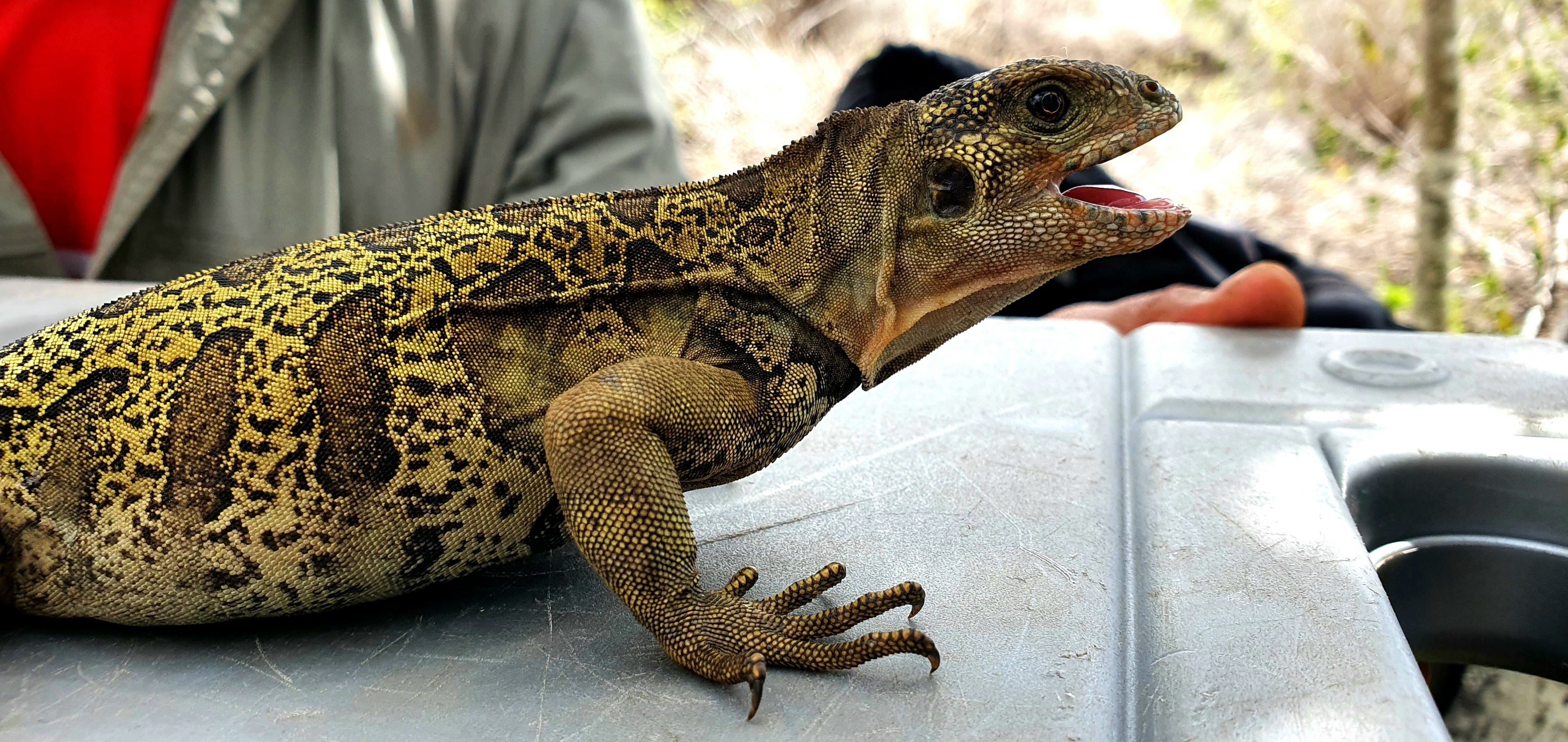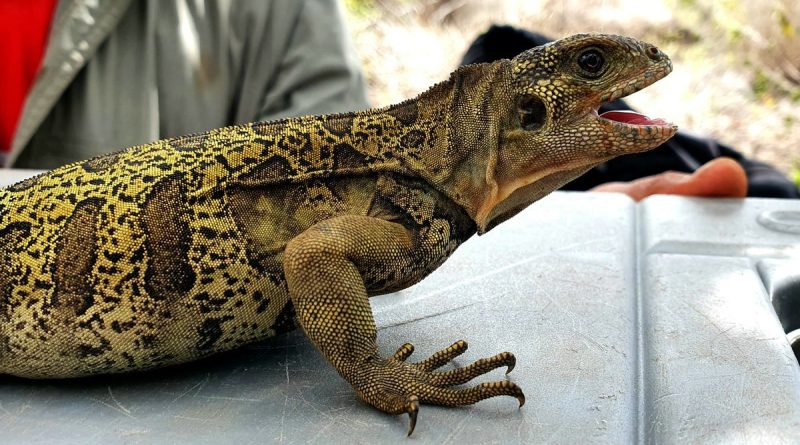Endangered pink iguana babies in Galapagos, cats, rats ID’d as threat
[ad_1]

After over 10 months of searching, researchers at Galápagos National Park have found juvenile pink iguanas, part of an endangered species.
Previously, only adult or subadult pink iguanas were found in the area.
That changed recently when wildlife experts from the Galápagos National Park Directorate and Galápagos Conservancy documented the first-ever hatchlings and juvenile iguanas at Wolf Volcano on Isabela Island.
Bárbara Arizaga, a spokesperson for the Galápagos Conservancy, said the first pink iguana hatchlings were found in February 2022. Around 10 hatchling iguanas have been found since February and they were only a few weeks old.
The find was part of the Iniciativa Galápagos program, a series of expeditions to learn more about the species.
Hidden trail cameras also captured the iguanas’ nesting activity and allowed the team to pinpoint threats to the species – feral cats.
The journey to find juvenile pink iguanas
The Galápagos Islands are home to multiple species that can’t be found anywhere on earth, including the giant Galápagos tortoise, the marine iguana and the Galápagos penguin.
As for the pink iguana:
- The lizard was first spotted in the Galápagos Islands in the 1980s and was named a new species of iguana in 2009.
- Its global population is an estimated 200 to 300 adults, the conservancy said.
- Neonates or juveniles have ever been found and until now, no one knew what baby pink iguanas were like.
- And despite the name, pink iguanas aren’t pink when they are born. At birth, they appear green and they get their pink color as they age. This pink hue is from a lack of pigmentation in the skin, making it easier to see the blood underneath their skin.
Feral cats, other threats to the species
The juvenile iguanas weren’t the only discovery.
Hidden trail cameras helped the team researching the endangered species pinpoint what threats the pink iguana currently faces, including non-native feral cats.
Pink iguana hatchlings spend days digging their way out of their underground nests. Once they reach the surface, feral cats that have surrounded the nesting sites attack, the conservancy said.
“It is suspected that cat predation has prevented juvenile recruitment of pink iguanas into the adult population for more than a decade,” the nonprofit wrote on its website. “These descriptions represent a breakthrough in knowledge about the species and identify a path forward for conservation actions to save the Pink Iguana from the verge of extinction.”
Rats have also been seen near pink iguana nesting sites, so they may be considered threats too, a conservancy spokesperson said.
Now, researchers are tasked with monitoring and protecting the iguanas’ nesting sites. Part of this plan includes a field station funded by the Galápagos Conservancy with a 360-degree view of the volcano to help protect against illegal poaching and wildlife trafficking.
Danny Rueda, director of the Galápagos National Park, said in a news release that “this remote base will facilitate conservation and monitoring work on the volcano, helping guarantee the conservation and restoration of the pink iguana population.”
Saleen Martin is a reporter on USA TODAY’s NOW team. She is from Norfolk, Virginia – the 757 – and loves all things horror, witches, Christmas, and food. Follow her on Twitter at @Saleen_Martin or email her at sdmartin@usatoday.com.
